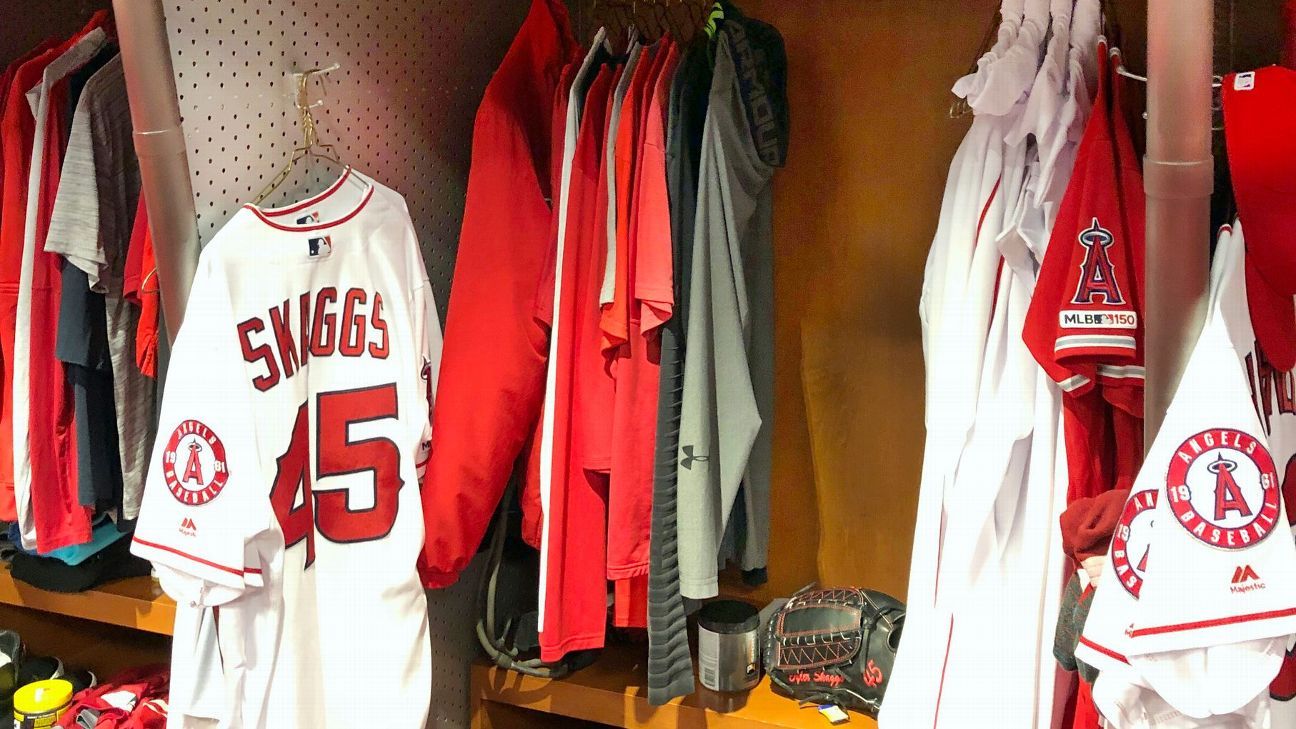FORT WORTH — Both sides in the U.S. trial of Eric Kay that began Tuesday said jurors will see a line of major leaguers who received opioids from Kay at the Los Angeles Angels clubhouse.
Kay, the team’s former director of communications, faces felony charges of distributing opioids and causing the opioid-related death of Angels pitcher Tyler Skaggs in 2019 while on tour in Texas.
During the defense team’s opening statement, attorney Reagan Wynn also indicated that the defense will name former All-Star pitcher, matt harvey, as a possible drug source for Skaggs. While presenting the defense’s version of events, Wynn told the jury that Kay saw Skaggs inhale lines of crushed pills the night he died, two blue and one pink, and asked Skaggs where the pink pill had come from. .
“Tyler Skaggs told him ‘those are the Percocets I got from Harvey,'” Wynn said. The government did not name Harvey during its opening statement, but said a player will testify that he had previously given Skaggs pink pills, but denied doing so before the fatal tour trip. Harvey is expected to testify as a government witness later this week. Harvey’s agent, Scott Boras, said he could not comment.
Percocet was not found in Skaggs’ system, but the government identified one of the drugs found in Skaggs’ room as the prescription opioid.
Wynn also said that Kay, an admitted opioid addict, obtained pills on occasion from the umpires’ clubhouse assistant at Angel Stadium, Hector Vazquez. Vazquez could not be reached for comment Tuesday night.
With Vázquez’s alleged involvement and the possibility of several players admitting to drug abuse, the case harkens back to the 1985 Major League Baseball drug scandal that saw 11 Major League players suspended for cocaine use and remains one of the most the darkest episodes of the game.
The government presented a portrayal of Kay as a drug dealer who was the sole source of opioids for several players, and who recklessly gave Skaggs a pill laced with the deadly synthetic drug fentanyl, resulting in his death. During her opening statement, Assistant United States Attorney Lindsey Beran said that Kay was also the only person who could have given Skaggs medication, and that the evidence will show that Kay provided her with pills shortly before she died.
“Eric Kay and Tyler Skaggs were not friends ‘out of work,'” he said. “Eric Kay was Tyler Skaggs’ drug dealer. That was their relationship.”
Before the day was out, the government produced its first witness, former Angels pitcher and current Los Angeles Dodgers pitcher Andrew Heaney, who laid out typical travel procedures for a tour, along with descriptions of who had access to players at Angel Stadium in Anaheim. He also discussed the increasingly frantic messages Skaggs’ wife, Carli, sent to Heaney and his wife on July 1, 2019, as she was unable to reach Skaggs before his body was discovered in Skaggs’s hotel room. his team. (Carli Skaggs is also expected to testify as a government witness.) When asked if she knew Skaggs was an opioid user, Heaney said “no.” The court session was adjourned before the defense could begin cross-examination, which it will do on Wednesday morning.
Kay repeated his “not guilty” plea as he was tried in front of the jury and watched the day’s events with little reaction as his sister, mother and four of his friends from California looked on from the gallery.
The defense’s case boils down to three key arguments: first, that there is no way to prove that the oxycodone or fentanyl in Skaggs’ system killed him; he didn’t die of an overdose, he choked on his vomit. He had also ingested grain alcohol that night. Second, even if the pills caused Skaggs’ death, there’s no way to prove that Kay gave him the pills in question. And third, even if Kay provided Skaggs with the pills he took on the day of his death, there is no way to prove that the transaction took place in Texas.
A crucial point that the defense will pursue is the government’s assertion that “had it not been for the fentanyl” in Skaggs’ system, he would not have died. That finding was not in the original autopsy report, which ruled Skaggs’ death accidental. When the government charged Kay last year, he said the determination was made later, but he did not provide details.
Prosecutors also said they are prepared for a defense team attack on the man who performed the autopsy, former Tarrant County Medical Examiner Marc Krouse. Krouse was fired last year after an investigation found that he had made significant errors in other autopsies. There has been no accusation that he made any mistake in examining Skaggs.
During “voir dire,” the process by which attorneys cross-examine prospective jurors, and in the opening statement, the government took pains to point out that autopsy and toxicology reports are separate and distinct procedures. Krouse did the autopsy report, but a toxicologist determined what was in Skaggs’ system when he died.
After the jury was dismissed, Assistant United States Attorney Errin Martin questioned the judge about limiting the defense’s ability to pursue Krouse, but Judge Terry R. Means said the defense could question Krouse’s abilities as a expert witness when relevant.
The trial is expected to last approximately two weeks.
We wish to give thanks to the writer of this short article for this remarkable web content
Skaggs death trial opens in Texas

